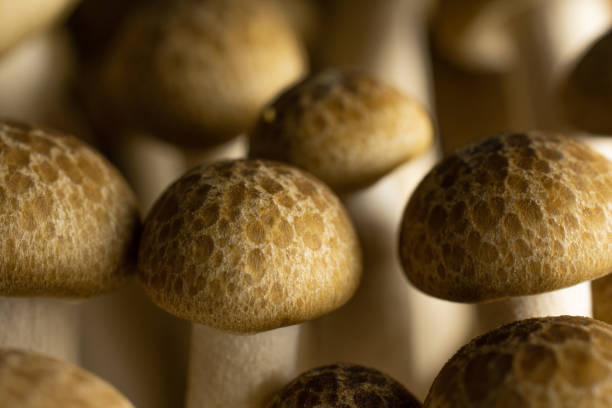The Art of Fungi How Mushroom Drawing Inspire and Captivate

Mushrooms have long fascinated us with their unique shapes, colors, and mysterious allure. Beyond their culinary uses and medicinal properties, mushrooms have also inspired artists and illustrators throughout history. In this article, we will explore the captivating world of mushroom drawing and how they have influenced art, culture, and creativity.
The Beauty of Fungi: An Overview
1. The Diversity of Mushroom Species
Mushrooms come in a stunning array of shapes, sizes, and colors. From the classic white button mushroom to the vibrant red-capped fly agaric, each species offers a visual feast for the eyes. Illustrators have been drawn to their captivating forms, making them a popular subject for artistic expression.
2. The Role of Mushrooms in Nature
Mushrooms play a crucial role in the ecosystem as decomposers, breaking down organic matter and recycling nutrients back into the soil. Their fascinating life cycle and ecological significance have piqued the curiosity of artists, leading to various depictions in art.
A Brief History of Mushroom Drawing
3. Early Depictions in Ancient Art
Mushrooms have been a part of human history for thousands of years. In ancient cave paintings and petroglyphs, early humans depicted mushrooms as part of their daily life and rituals. These ancient drawings provide insight into the cultural significance and symbolism of mushrooms in ancient societies.
4. Renaissance and Botanical Illustrations
During the Renaissance, botanists and artists began creating detailed botanical illustrations of plants, including mushrooms. These drawings served both scientific and artistic purposes, documenting the various species and their unique characteristics. The work of renowned artists like Leonardo da Vinci and Maria Sibylla Merian exemplifies the fusion of science and art in mushroom drawing.
5. The Mushroom Mania of the Victorian Era
In the Victorian era, there was a surge of interest in natural history and botanical illustrations. Mushrooms became a popular subject for illustrators and were featured in books, scientific journals, and household decor. This fascination with mushrooms also led to the emergence of mushroom-themed art and crafts during this period.
Modern Interpretations: From Realism to Abstraction
6. Realistic Mushroom Art
Contemporary artists continue to create realistic mushroom drawing, showcasing the intricate details and textures of different species. With advancements in art tools and techniques, artists can produce hyper-realistic renderings that resemble photographs. These drawings often serve educational and scientific purposes, helping viewers identify various mushroom species accurately.
7. Surreal and Fantasy Art
Mushroom drawing have also found a place in surreal and fantasy art. Artists use mushrooms as a metaphor for magic, dreams, and the subconscious. The whimsical and otherworldly nature of mushrooms allows for creative interpretations and storytelling.
8. Psychedelic Art and Mushrooms
The association between mushrooms and altered states of consciousness has inspired a unique genre of art known as psychedelic art. These drawings often feature vibrant colors, intricate patterns, and surreal imagery, reflecting the psychedelic experiences associated with certain mushroom species.
The Therapeutic Power of Mushroom Art
9. Art Therapy and Mushrooms
Mushroom drawing can have therapeutic benefits, especially in art therapy. Creating and engaging with mushroom art can provide a sense of calm, introspection, and self-expression. For individuals struggling with anxiety or stress, mushroom art can serve as a creative outlet for emotional release.
10. Connecting with Nature Through Art
Mushroom drawing also offer a way to connect with nature, even for those who may not have direct access to forests or wild landscapes. Through art, people can explore the beauty of mushrooms and appreciate their importance in the natural world.
FAQs
1. Can anyone learn to draw mushrooms?
Absolutely! While some people may have a natural inclination towards art, anyone can learn to draw mushrooms with practice and dedication. There are numerous tutorials and art resources available online to help you get started.
2. Are there any cultural taboos associated with mushroom art?
In certain cultures, mushrooms may carry spiritual or religious significance, and their depictions may be subject to specific taboos or restrictions. It is essential to be respectful and mindful of cultural sensitivities when creating or sharing mushroom art.
3. How can mushroom art be used in interior decor?
Mushroom-themed art can add a touch of whimsy and nature-inspired beauty to interior spaces. Framed prints, paintings, or even mushroom-shaped sculptures can be excellent additions to home decor, especially for nature enthusiasts.
4. Are all mushrooms safe to eat?
No, not all mushrooms are safe to eat. Some species can be highly toxic and even fatal if ingested. It is crucial to only consume mushrooms that have been positively identified as edible by experts or experienced foragers.
5. Where can I find mushroom-related art exhibitions or events?
Art galleries, museums, and botanical gardens often host exhibitions featuring mushroom-related art. Additionally, art communities and social media platforms are excellent places to discover artists who specialize in mushroom drawing and art.
Conclusion:
Mushroom drawing have a timeless charm that continues to inspire artists and captivate audiences worldwide. From ancient cave paintings to modern digital illustrations, mushrooms have left an indelible mark on the world of art. Their beauty, diversity, and symbolism make them an enduring subject of artistic exploration.




